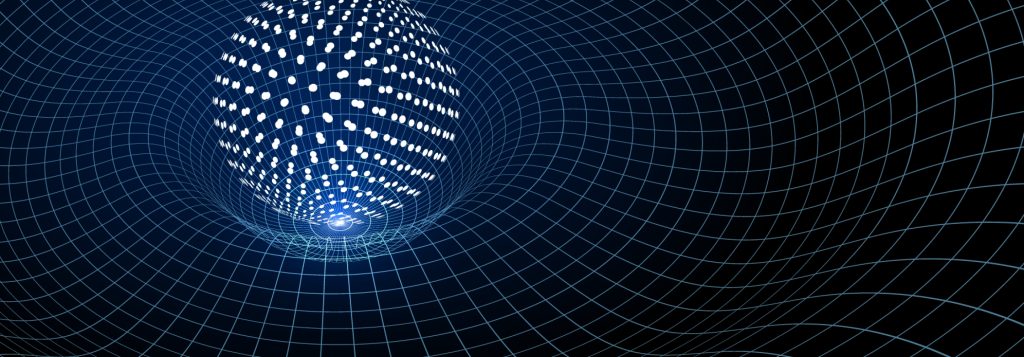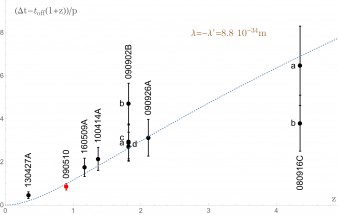
Curvature-induced quantum gravitational effects
In the recently published paper titled Phenomenology of curvature-induced quantum-gravity effects (Physics Letters B Volume 820, 10 September 2021, 136595) Giovanni Amelino-Camelia, Giacomo Rosati, and Suzana Bedić present the results of their study on the phenomenology of curvature-induced quantum gravitational effects.
Among the opportunities to bridge the gap between theoretical approaches to quantum gravity and phenomenology, the possibility that quantum spacetime might tangibly affect relativistic kinematics, leaving signatures of Planck-scale effects for particles propagating from distant astrophysical sources to our telescopes, has played a prominent role. For the tiny Planckian-suppressed effect to accumulate, in order to reach the sensibility of observations, not only the particles must have very large (ultra-relativistic) energies, but they need also to travel for extremely large (cosmological) distances. High-energy photons from gamma ray bursts provide one of the most promising sources for these kinds of observations/constraints.
A phenomenological model suitable for these kinds of studies, must necessarily take into account of the interplay between quantum gravity effects and spacetime curvature/expansion. So far, in the relevant literature, only scenarios where modifications to standard particle kinematics are triggered by the quantum gravity scale alone, while spacetime curvature appears just as a small correction to the dominant quantum gravity effect, have been considered.
This can be traced back to the assumption that the double suppression due to the smallness of both the two scales would leave no chance for the overall effect to be observable. However, the possibility that the presence of curvature might be required in order to have the novel relativistic properties, i.e. that quantum (gravity) spacetime affects relativistic kinematics only in presence of spacetime curvature, finds motivation in some recent intriguing quantum gravity studies.
In this paper, the authors consider for the first time a phenomenological model where the novel relativistic effects are triggered by curvature, i.e. they are present only when the quantum gravity scale and curvature are both not negligible, and test the model against observations of time delays in the arrival of high-energy photons emitted by gamma ray bursts.
The authors find that, contrary to what was naively expected, the model is phenomenologically viable, due to the fact that the curvature terms always appear multiplied by distance, so that, when the sources are sufficiently far away, at sufficiently large distances of the sources, the smallness of curvature is compensated by the large distance traveled by the observed photon.
Moreover, the model suggests a qualitative feature characterizing curvature-induced scenarios: while the effects are phenomenologically viable for large distances (redshifts of order one), they are suppressed, respect to the (non curvature-induced) scenarios usually considered in the literature, at smaller distances. A feature that, at least from this preliminary investigation, seems could be favoured by data.

Here shown are the 11 gamma-ray-burst high energy photons relevant for the analysis. The plot shows the observed ratio between the time delay in the arrival of high energy photons respect to the low energy peak of the emission and the energy p of the photons, in function of the redshift z of the source. The parameters λ i λ’ of the model are fixed to have a curvature-induced scenario, and characterize the expected quantum gravity scale.
The model curve, dotted blue, shows in particular how the dumping of the effect at redshift smaller than one, fits particularly well the point provided by GRB090510; to date, the most challenging observational data for this kind of analyses.
Added by: Joanna Molenda-Żakowicz
Dean’s representative for faculty promotion and media relations
